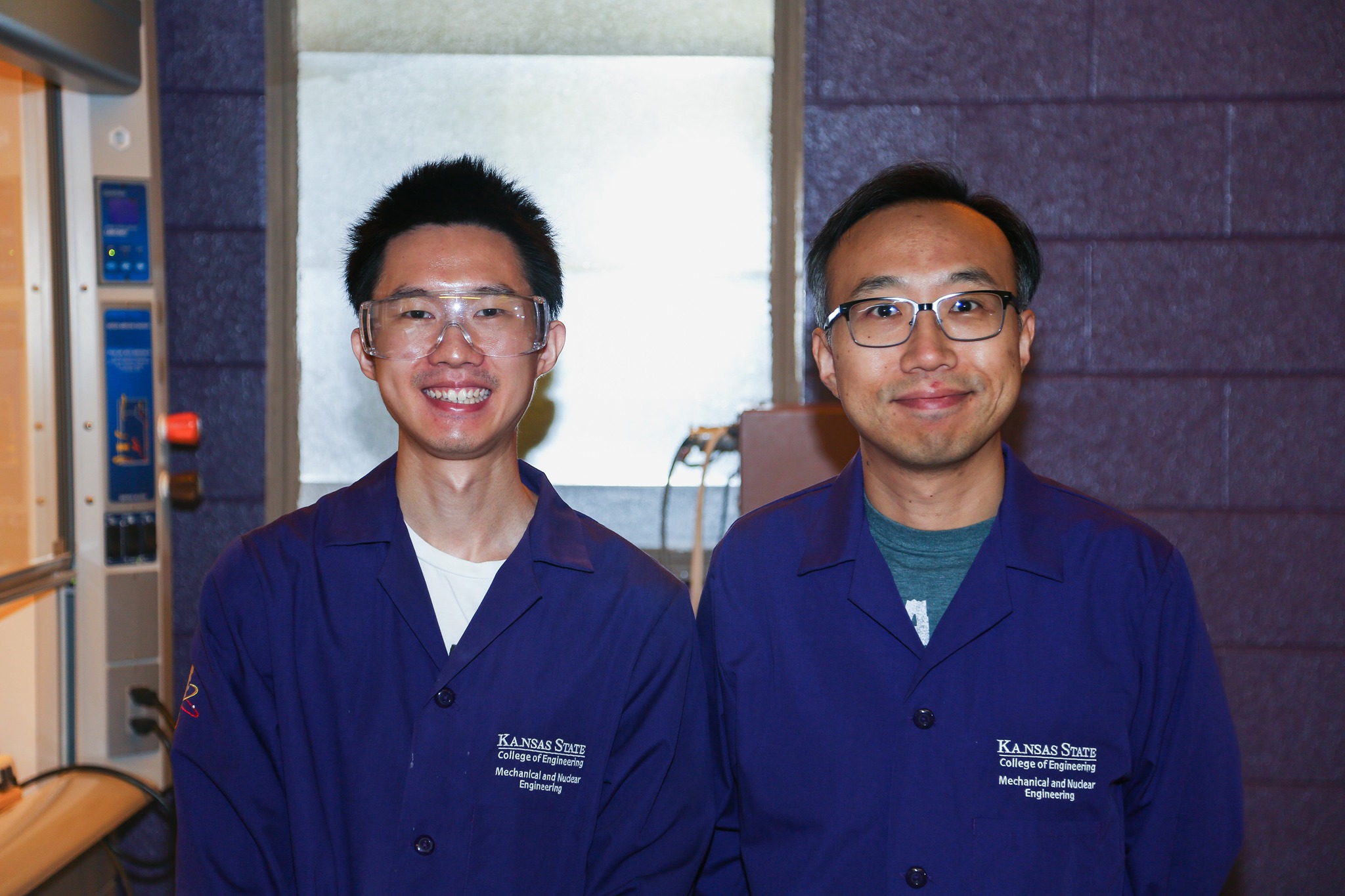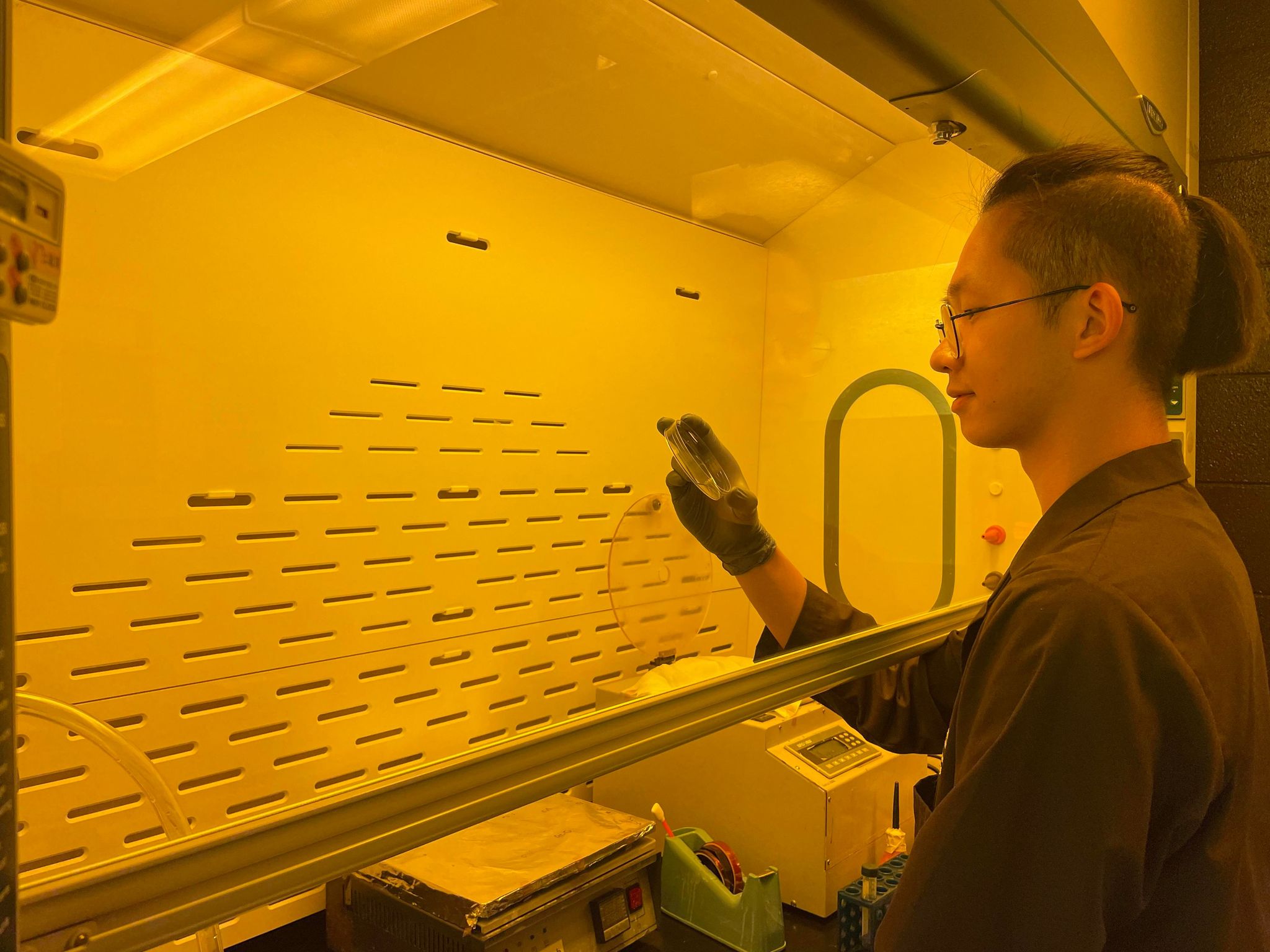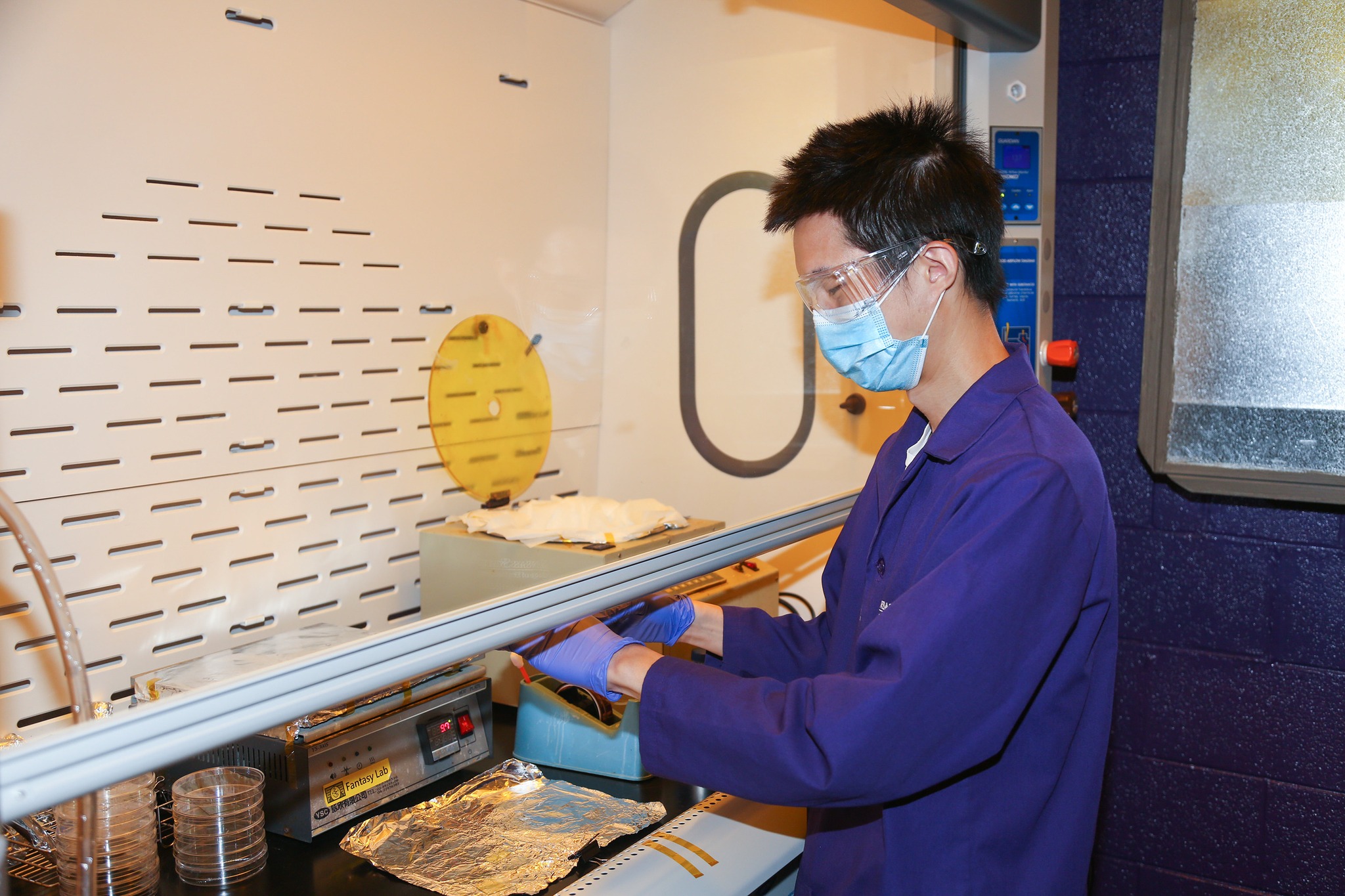K-Staters work to advance the testing of beef for E. coli
Shiga toxin-producing E. coli, or STEC, causes more than $342 million in annual economic losses nationwide, according to the U.S. Department of Agriculture. The beef industry in Kansas produces nearly 11% of the country’s red meat per year, according to a 2018 report by the Kansas Department of Agrictulture. Researchers at Kansas State University are working to advance the process of detecting STEC in beef.
Jing Ding came to K-State as a postdoctoral fellow in September 2021. He grew up in Guangzhou, China and studied at Xi’an Jiaotong University where he graduated with two degrees — a Bachelor of Science in energy and power system and automation as well as a doctorate in power engineering and engineering thermal physics.
Kuan-Lun Ho is in his fourth semester at K-State pursuing a doctorate in mechanical and nuclear engineering. He is from Hsinchu, Taiwan, and stayed in his home country for college as he completed a Bachelor of Science in marine engineering from National Taiwan Ocean University and later a Master of Science in mechanical engineering from National Taiwan University.

Ding and Ho both have a mutual connection with Shih-Kang “Scott” Fan, professor in the Alan Levin Department of Mechanical and Nuclear Engineering at K-State.
Ho had Fan as a professor for a graduate class and did his master’s research under Fan at National Taiwan University, where Fan worked from 2012-2019. Ding met Fan as a student through an exchange program between their universities that allowed him to visit Fan’s lab in the summer of 2015. After that summer, they continued to stay in touch and collaborate virtually.
Ding and Ho both said their interest in Fan’s work and the way it lined up with their own backgrounds influenced them to come to K-State. Despite their shared connection to Fan, they never met until they arrived in Manhattan. Now they are working together with Fan on two projects supported by the K-State Global Food Systems Seed Grant program.
Their goal is to promote food safety by advancing the detection of STEC, so that it can be regularly monitored throughout the supply chain. Accessibility to the testing system, sensitivity of the test and accelerating the process of obtaining test results are a few improvements they are aiming for.
They are using polymerase chain reaction, or PCR, detection testing using a technology called digital microfluidics, or DMF. DMF uses an electric field to manipulate tiny droplets and serves as a chemical reaction chamber. Those droplets can contain chemical or biological samples and the DMF can be used to detect viruses or pathogens, in this case, STEC.
To test for STEC, a ground beef sample is placed into an E. coli culture broth that draws out any E. coli pathogens and suspends them in the broth. That process takes around six to eight hours and generally happens overnight. Several microliters of fluid are drawn out and mixed with the PCR reaction mixture, then injected into the DMF chip. At this point, the digital PCR test inside the DMF chip happens.

The bulk fluid is partitioned into small wells in the DMF chip. Ideally, each well will have no more than one bacterium.
There are two genes that they are looking for when testing the beef. One is the Shiga toxin gene and the other is a certain serotype of E. coli, the most notorious one being 0157. If both genes register as negative, that is ideal. Even if one of those genes is present but the other is not, that is also fine. The problem comes when both genes are found in the beef sample.
One challenge is that ground beef has many inhibitors that can limit the test’s sensitivity, which is the lowest quantity of the substance able to be detected. However, they have discovered that using hydrogel during the test could solve this problem.
“Hydrogels are polymer networks that are hydrophilic, which means they contain a high percentage of water — above 95% — and are suitable for biological applications, such as an interface for a molecular assay in this case,” Ho said. “In our project, we wanted to perform the PCR in a hydrogel and expected that the inhibitor would be trapped by the polymer network of the hydrogel, so the inhibitor would not affect the PCR reaction.”

According to Ding, they are currently preparing the paperwork to apply for a patent for their technology and the hope is to use it to grow point-of-care testing for STEC in the beef industry, starting in Kansas and beyond.
“Maybe, based on the patent, we can form a startup company in Kansas. Maybe Kansas can become a standard for STEC monitoring and detection,” Ding said.